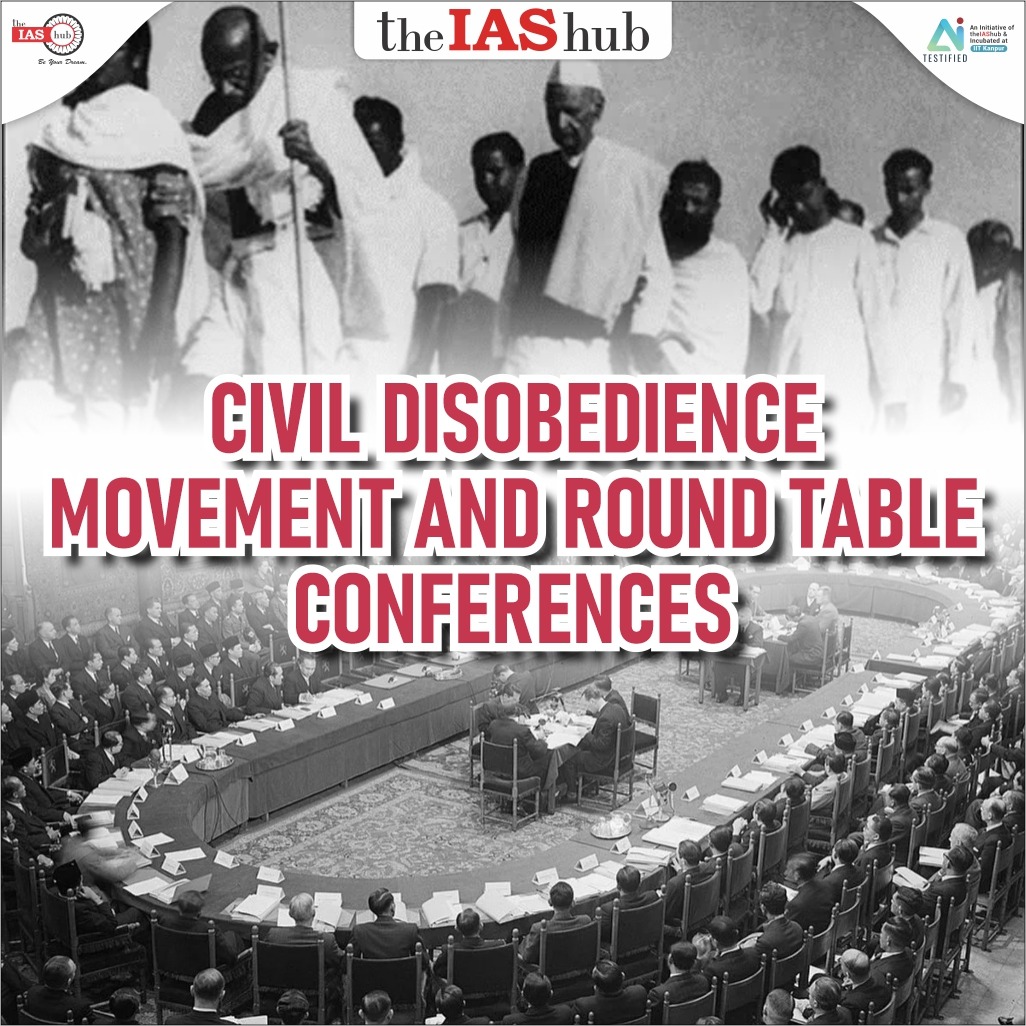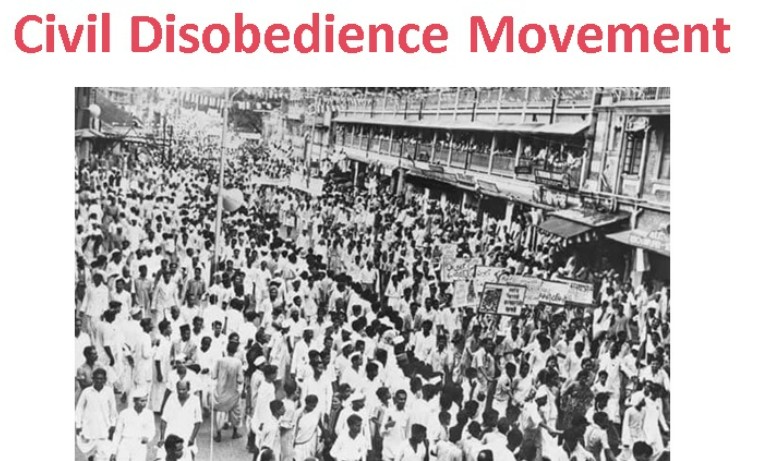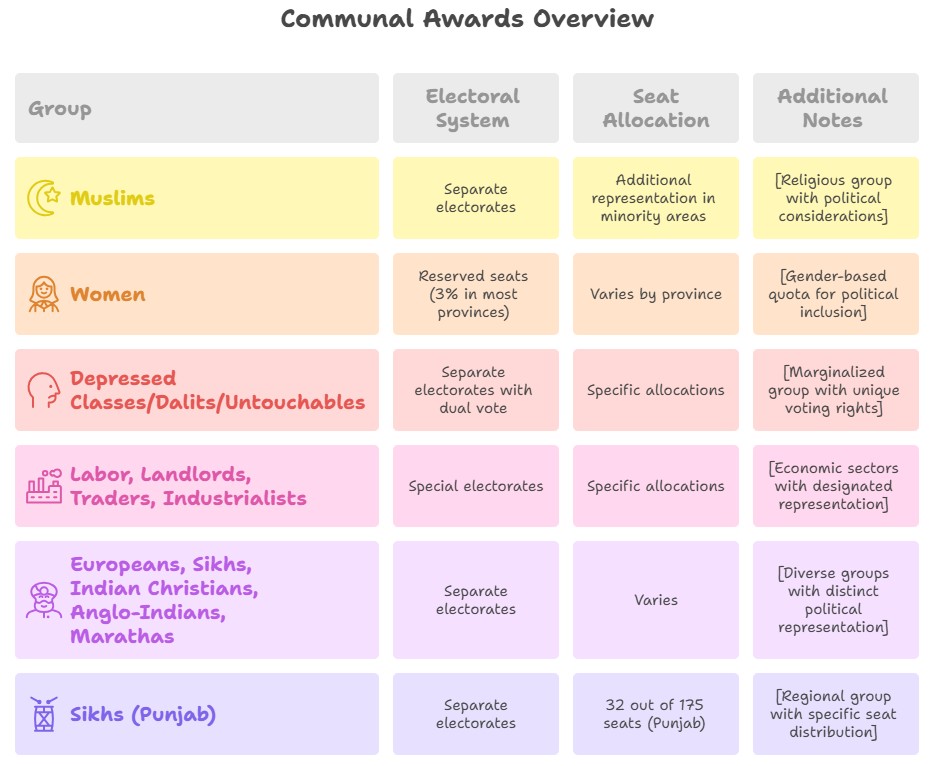Explore the Civil Disobedience Movement led by Mahatma Gandhi in 1930. Learn about its causes, objectives, Gandhi-Irwin Pact, Round Table Conferences, and its impact on India’s freedom struggle and constitutional reforms like the Government of India Act 1935.


The Civil Disobedience Movement (1930–1934), led by Mahatma Gandhi, was a landmark phase in India’s freedom struggle. Beginning with the Dandi March, it united millions in defying British laws and demanding complete independence (Purna Swaraj).

The movement aimed to challenge British salt laws and unfair taxation policies, while also demanding complete independence for India.
Negotiations and Truce: After several months, negotiations took place between the British and Indian leaders, leading to the Gandhi-Irwin Pact in 1931, which temporarily halted the movement.
Nevertheless, the conferences played a role in shaping the political discourse and highlighting the diverse interests and challenges in India's struggle for self-rule.

|
First Round Table Conference (1930-1931) |
Second Round Table Conference (1931) |
Third Round Table Conference (1932) |
|
|
Dates |
November 12, 1930 - January 19, 1931 |
September 7, 1931 - December 1, 1931 |
November 17, 1932 - December 24, 1932 |
|
Key Participants |
- Ramsay MacDonald (British Prime Minister) - B.R. Ambedkar - Tej Bahadur Sapru - Aga Khan III - Srinivasa Sastri - Sarojini Naidu - Various Princes and Representatives from Indian States |
- Mahatma Gandhi - B.R. Ambedkar - Madan Mohan Malaviya - Sarojini Naidu - Sir Mohammad Iqbal - Aga Khan III - Ramsay MacDonald (British Prime Minister) |
- B.R. Ambedkar - Tej Bahadur Sapru - Sir Mohammad Iqbal - Various Representatives from Indian States |
|
Main Discussions |
- The structure of government in British India - Representation of the provinces - The role of native princes in governance - Minority representation and rights |
|
- Awarding a separate electorate to the 'Depressed Classes' (Scheduled Castes) - Representation of minority communities - Drafting of a new constitution for India |
|
Key Outcomes |
- It was decided that India should have a federal structure with autonomy for provinces. - Agreement on the need for communal representation. |
|
|

|
Responses:
|
Poona Pact:
|
The Government of India Act 1935 was a significant piece of legislation enacted by the British Parliament to address the growing demands for greater Indian participation in the governance of the country.
The Government of India Act 1935 served as a significant step towards constitutional reforms in India. Although it did not fully meet the aspirations of Indian nationalists for self-governance and complete independence, it laid the foundation for future constitutional developments and played a role in shaping India's political landscape.


Refine your answer writing skills and elevate your UPSC preparation with personalized support and expert feedback.
Fill out the form to get started with the program or any other enquiries !








Are you dreaming of becoming an IAS officer? Then, IAShub can be your best guide. It is one of the Best IAS Coaching in Delhi. Many students who want to clear the UPSC exam join IAShub for learning. The institute gives both online and offline classes. Their teachers are experienced and helpful. They easily explain every topic. Students also get notes, tests, and tips to do well in the exam.
IAShub is in Delhi and is trusted by many UPSC students. It offers coaching for every part of the UPSC exam – Prelims, Mains, and Interview. The classes are simple and easy to understand. The teachers are experts and guide students in the right way. IAShub is also known for its helpful notes, test series, and answer-writing practice. IAShub is the best coaching in Delhi and also gives UPSC Online Classes. This helps students from any place in India to learn. The online classes are live and also recorded. So, students can watch them anytime. These classes cover the full UPSC syllabus.
Here are some important services provided by IAShub:
The UPSC Civil Services Exam has three parts:
This exam is tough, but with the right guidance, it becomes easy to manage. Students must study smart and stay regular.
IAShub supports students from the beginning to the end. It gives the right books, tests, and notes. The classes are easy to follow, and the teachers are always ready to help. Students get personal doubt sessions too. The test series and answer checking help students learn where they need to do better. Also, free study materials save time and money.
IAShub also guides students during the final stage – the interview. Experts take mock interviews and give useful tips. This full support makes IAShub one of the best IAS coaching in Delhi.